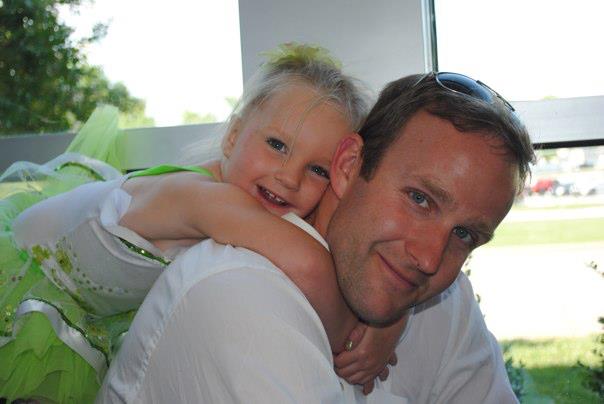If you’ve read anything I’ve shared on marriage in the past, then you’re familiar with Jared Black. He is not only the one that first invited me on this journey of “rethinking” marriage, but he & his wife Stephanie have been incredible sounding boards and shoulders to whine on for Analee and I when matrimony burns extra hot.
Jared has made a lifestyle of “rethinking” life and is often one of my favorite people in the world to process with, especially when it comes to marriage. The following 900 words come from a conversation he and I shared over a cup of coffee weeks ago. I thought his refreshing perspective could liberate a few of us.
Enter Jared Black.
Jared, I know you have plenty to say on the subject, but can you share one significant shift in your thinking over the years that has changed the way you approach and experience your marriage?
About a decade ago, my wife Stephanie and I were visiting a church on a rare night out together away from our then two young children. The service concluded with an opportunity to pair up with someone from the ministry teams for prayer. In a casual moment of introduction, we announced to our prayer partner that we had been married for five years. Without a beat, the woman made a statement that has since altered the way I view marriage in general, but specifically my own journey of marriage. In response she simply and boldly proclaimed (with a southern drawl), “five years of marriage? It’s like y’all are in Kindergarten!”
Until that moment, I had never considered marriage, our marriage, through the lens of a development cycle. I guess I had somehow just assumed that marriage was an event that happened on a specific date, in a specific year. As far as I was concerned, I was married…end of story. However, the thought of a kindergartener (navigate to this website to find out the best franchise for this field of business), full of potential, full of questions, and a developing future (not to mention all the tantrums, immaturity, and poor communication) seemed to be a better descriptive of what my wife and I had been experiencing day to day.
Suddenly the first four years of our marriage with the continual struggle to communicate with each other or make mutual decisions without one of us feeling violated began to come into focus. Being able to view our marriage during those times as if we were, say, a 3-year-old child helped ease the pressure of supposedly knowing how to be married.
In short, a 3-year-old can’t be expected to act and communicate like an adult. So why would we, a newly married 3-year-old couple, for instance, know any better? We simply hadn’t arrived at that stage in our growth as a couple. But the hope for the 3-year-old is to grow through the childish years, with all it’s vying for attention, temper tantrums, and selfishness, to become a fully functioning, mature, capable adult.
This has lead to the more foundational concept that marriage, then, is an ongoing action discovered with my wife; a development cycle. Marriage isn’t something that we accomplished the day we said “I Do”. It was the beginning of an entirely new being; the “one new flesh” so often referenced during traditional marriage ceremonies. The day of marriage brings into creation a brand new infant couple, pledging to learn the art of marrying their individual lives into one combined, married, maturing life together.
Maybe it is better said like this: In as much as I am presently married to Stephanie, it is more accurate to say that with every day, we are actively marrying each other as we bring our individual thoughts, responses, fears, and strengths into this intimate bond called marriage.
And for you and Steph, what does this progressive “marrying” process look like from day to day?
Steph and I have discovered that our primary goal isn’t learning to be married in a static sense so much as learning the art of marrying our own individual responses, desires, and efforts in any present moment.
It usually looks like this: When we have a conflict, it is most often caused by a difference in the way we see a certain situation, unspoken expectations that aren’t met, or general frustration at the way the other person handled something. We each solved whatever situation is now in question in our own, individualistic way; through our own lenses, valuing in our decision and actions only what was important to us individually.
What is needed to accomplish the marrying of lives at that moment is to practice a method of resolving (read re-solve) the situation through communication. Since it is clear that I have solved the situation a certain way and she has solved it a different way, then it becomes equally clear that on that particular issue, we now have an invitation to become married (again). This is nothing to freak out about, but something to verbally acknowledge so that the work of re-solving can produce the intimacy that only the ongoing marrying of our two individual lives can bring.
Practically speaking, how would a couple go about “re-solving” these issues together?
The practice of re-solving marital issues revolves around learning to communicate well with your spouse. This takes practice. Two individuals are almost always terrible at this at first. Most unresolved issues in marriage stem around each person’s inability to effectively hear what the other person is saying, and more importantly why they are saying it. Ironically, quality communication begins not by being a good talker, but by becoming a great listener.
Think about it. Most conflict revolves around each person trying their hardest to be heard! Steph and I now jokingly say that the first one of us to hear the other wins the argument. Why? Because is it only by focusing on what the other is saying, getting into their head, seeing the values that were driving their decisions and actions in the moment, can we finally get about the beauty of marrying our two individual worlds into a shared, exciting world of marriage.


Pingback: “Re-solve” conflict through listening | Tango Love Story()
Pingback: Marriage Rebranded: Interview with Jared Black()